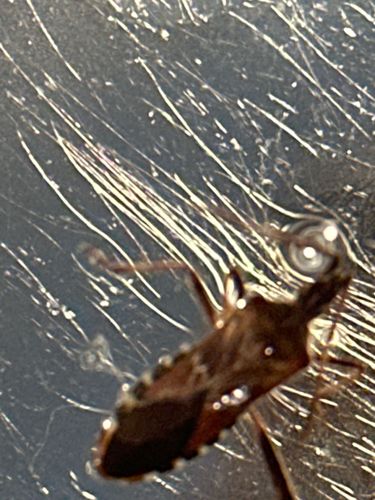Wheel Bug
Scientific Name: Arilus cristatus
Order & Family: Hemiptera, Reduviidae
Size: Typically 1 to 1.5 inches (2.5 to 3.8 cm) long, making them among the largest true bugs in North America.

Natural Habitat
Gardens, orchards, agricultural fields, wooded areas. They are often found on trees, shrubs, and tall weeds, where they hunt other insects.
Diet & Feeding
Predatory. Wheel bugs feed on a wide variety of other insects, including caterpillars, stink bugs, Japanese beetles, flies, and aphids. They use their strong, piercing-sucking mouthparts (rostrum) to inject venom and digestive enzymes into their prey, then suck out the liquefied body contents.
Behavior Patterns
Nocturnal hunters, though they can be active during the day. They are solitary and typically slow-moving. Their most distinctive feature is the cog-like crest on their thorax. They can inflict a painful bite if handled, though they are not aggressive and generally avoid humans.
Risks & Benefits
Potential risks include a very painful bite if provoked or handled, which can take several weeks to heal, though it is not medically dangerous. Benefits include acting as natural pest control agents, preying on many common garden and agricultural pests.
Identified on: 9/27/2025